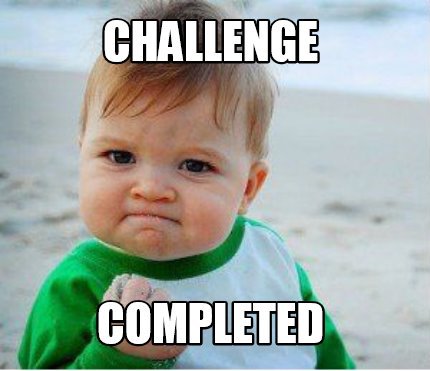As I’ve been progressing as an Android developer, and been venturing outside my comfort zone, people have suggested more and more activities to further immerse myself in the developer community. The main suggestion that has been floated around the most, was an event called a hackathon.
After, hearing the word “hackathon”, I didn’t think I would be qualified for such an event, after all, I don’t know how to “hack”. Well, some time passed, and I got a hint of motivation so I googled, “what is a hackathon”. For a quick reference, a hackathon is an event, typically lasting several days, in which a large number of people meet to engage in collaborative computer programming. Then I searched, “what experience do I need to attend a hackathon”, “what is a hackathon like”, and “as a new developer, should I go to a hackathon”. Luckily, these searches netted a lot of positive results and encouraged me, a new developer, to give it a shot. What’s the worst that could happen!?
A few weeks before I found a hackathon to attend, I started looking for software meetups in my area. I found a few, including Java Programming Basics and an Agile/Scrum workshop, hosted by the Guild of Software Architects. A few days later, I came across a local hackathon that was going to be held in Dallas, Texas. A short trip from my home, so I registered as a developer on meetup.com, and although I didn’t expect to actually attend. I filled out the forms, and I was officially registered as a developer (how cool!). I was nervous, and as the date got closer I was leaning more towards not attending.
Two days before, I began feeling like I needed to attend because it felt important. Yet, the thought of attending resulted in trying to find reassurance that I was “good enough”. Luckily, google helped appease my concerns, but if one of those searches would of came back negative, I don’t think I would of gone.
The hackathon is finally here, I’m heading out to Dallas with my laptop, and my stomach is full of butterflies. I got lost finding parking, I couldn’t get my google maps to load, and I start wondering aimlessly around downtown Dallas trying to find the correct building. It’s cold, windy, but perfect weather for the toxic thoughts to start rushing back. I think, “hey, just leave, just go home and watch tv, grab something to eat, relax, you don’t have to be here”. The internal battle is raging, but I continue, I find the building, I find the elevator, and I make my way up. When the doors open and I step off, I’m transported. There are hundreds of people, cards lined up on the front table from various businesses, name cards at the check-in desk, and everyone seems friendly and nice.
Finally, I breath a sigh of relief. I had this idea built up in my head that I would be the only one there. That I would be the focal point, and my inabilities would be personified amongst all of these judging people, and no one would accept me. But, it was different, I was one of hundreds, there were people of all ages, and experience levels, and I frankly could go completely unnoticed once I walked into the crowd. So just like a lost tourist, in a foreign area, I followed the crowd and the crowd was lining up for dinner.
Mexican food, was being offered for free, and I followed the crowd around as the line began wrapping around the hallway. I wanted to talk to people, but was still to shy to start up a conversation. Until, I made eye contact with the guy in front of me, and blurted out some type of greeting. This was all it took, and I was now fully engaged with a random stranger. He starting talking about his web development projects, and where he went to school. I told him about my Android development and how I was still new, but was making some progress. After, that short interaction he asked me if I would be on his team, which consisted of three web developers from the University of Dallas. I agreed, followed him to go sit down, and met the other members. At this point, it had only been about 30 minutes and I already had a team, I had some new friends, and I felt like I was part of something.
I think this is a good place to leave it, I’ll post the final part of my hackathon experience later this week (think Dec. 14). This was such an awesome experience, and I learned a lot. In hindsight, I’m proud that I had the courage to follow through, and put myself in a situation that was completely unknown and intimidating. Lastly, the hardest part was not finding a team, but showing up. So if you’re in a similar situation, where you don’t know what to expect. Just show up, you may surprise yourself.








